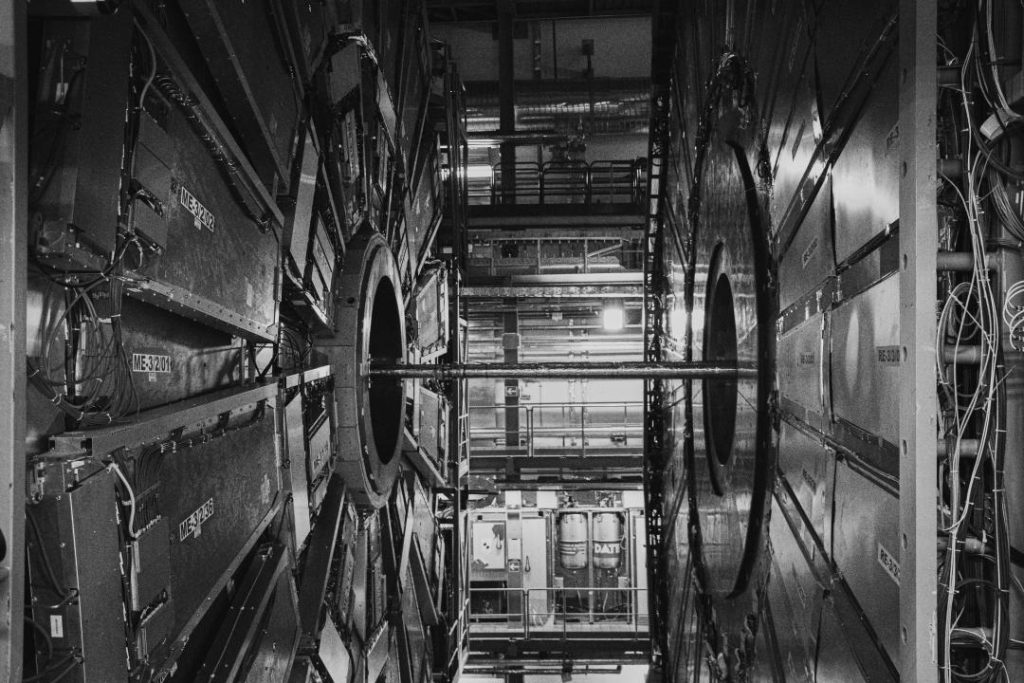
Unveiling Hypernuclei in Heavy-Ion Collisions
The quest to understand the fundamental forces of nature has led scientists to explore the most extreme environments, where the laws of physics are pushed to their limits. In the realm of high-energy particle physics, collisions between heavy ions have revealed a new frontier: the discovery of hypernuclei. The ALICE collaboration, a team of researchers at the Large Hadron Collider (LHC), has made groundbreaking measurements of these exotic particles, shedding light on the strong force and its role in the universe.
Hypernuclei are unstable particles that combine a nucleon (proton or neutron) with a hyperon, a heavier cousin of the neutron. The most well-known hypernuclei are hyperhydrogen-4 (ΛH4) and hyperhelium-4 (ΛHe4), which are the hyperonic counterparts of regular hydrogen and helium-4. The existence of these particles was first predicted in the 1950s, but it took until the 2010s for the ALICE collaboration to detect them in heavy-ion collisions.
The ALICE detector is designed to study the collisions of heavy ions, such as lead or gold, at extremely high energies. When these ions collide, they create a hot and dense medium that can produce a wide range of particles, including hypernuclei. The ALICE collaboration has been using advanced machine learning techniques to analyze the vast amounts of data generated by these collisions, searching for the telltale signs of hypernuclei.
The challenge lies in identifying the minuscule production rates of hypernuclei amidst the sea of particles produced in the collisions. The ALICE collaboration employed advanced algorithms and machine learning techniques to sift through the data and isolate the hypernuclei. This required the development of sophisticated software tools that could accurately reconstruct the particles’ properties and distinguish them from background noise.
The result of this Herculean effort is a significant breakthrough in the field of particle physics. The ALICE collaboration has detected the production of hyperhydrogen-4 and hyperhelium-4 in heavy-ion collisions, providing insights into the strong force that governs the behavior of quarks and gluons. The discovery of hypernuclei has far-reaching implications for our understanding of the universe, particularly in the context of antimatter and the balance between matter and antimatter.
The search for antimatter has been a longstanding quest in physics, dating back to the 1930s. The Standard Model of particle physics predicts that matter and antimatter should have been created in equal amounts during the Big Bang, but for some reason, matter dominated the universe. The discovery of hypernuclei provides a new avenue for understanding the balance between matter and antimatter, as these particles can shed light on the strong force and its role in the early universe.
The ALICE collaboration’s findings have significant implications for our understanding of the strong force, which is one of the four fundamental forces of nature. The strong force is responsible for holding quarks together inside protons and neutrons, and for holding these particles together inside atomic nuclei. The study of hypernuclei provides a unique window into the strong force, allowing researchers to probe its behavior in extreme conditions.
The ALICE collaboration’s work is a testament to the power of machine learning and advanced data analysis techniques in particle physics. The development of sophisticated algorithms and software tools has enabled researchers to extract valuable information from the vast amounts of data generated by high-energy collisions. This approach has opened up new avenues for research, allowing scientists to explore previously inaccessible regions of the universe.
In conclusion, the discovery of hypernuclei in heavy-ion collisions is a groundbreaking achievement that has significant implications for our understanding of the strong force and the balance between matter and antimatter. The ALICE collaboration’s work has demonstrated the power of machine learning and advanced data analysis techniques in particle physics, and has paved the way for further research into the mysteries of the universe.
News Source:
https://researchmatters.in/news/exotic-antimatter-spotted-heavy-ion-collisions-lhc






